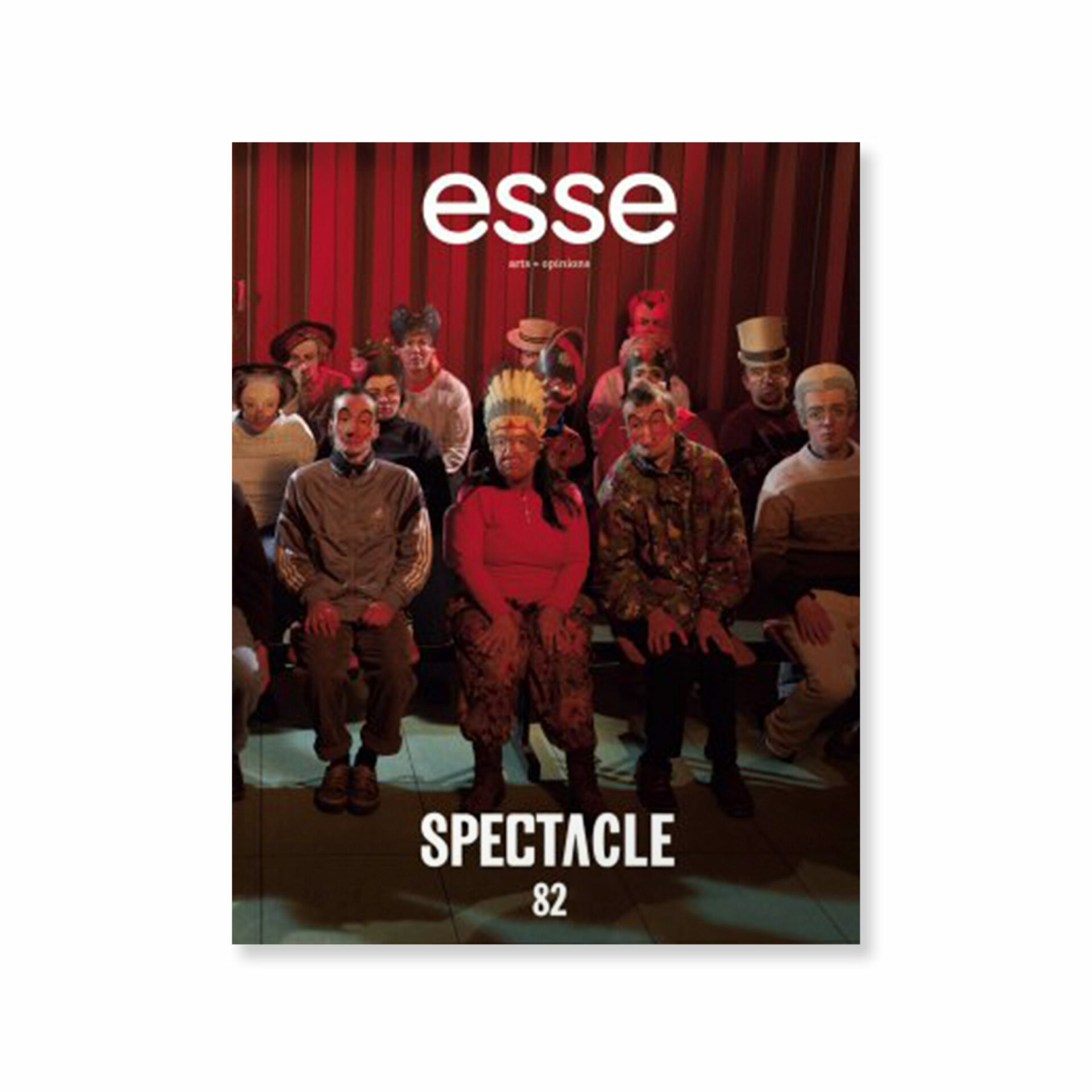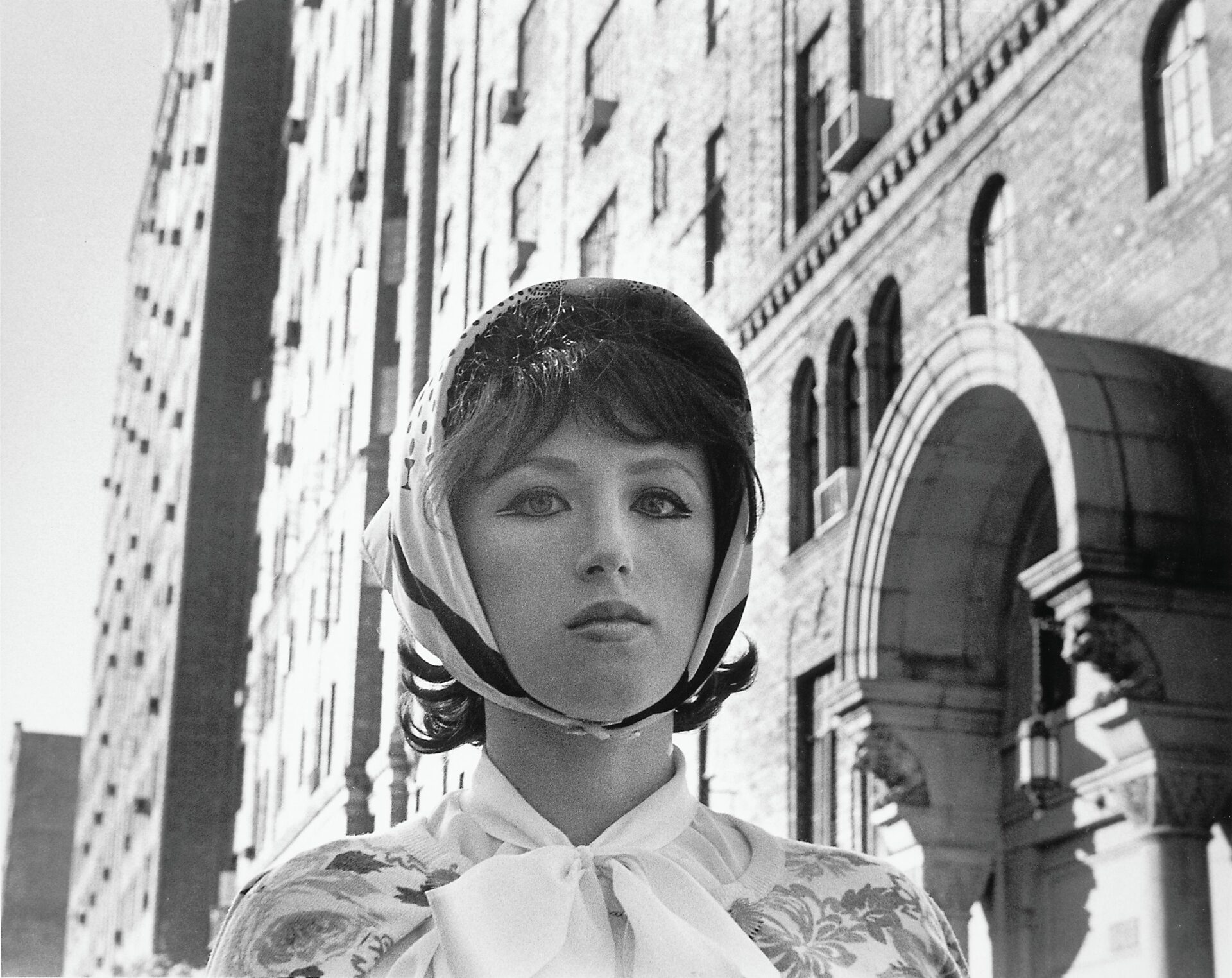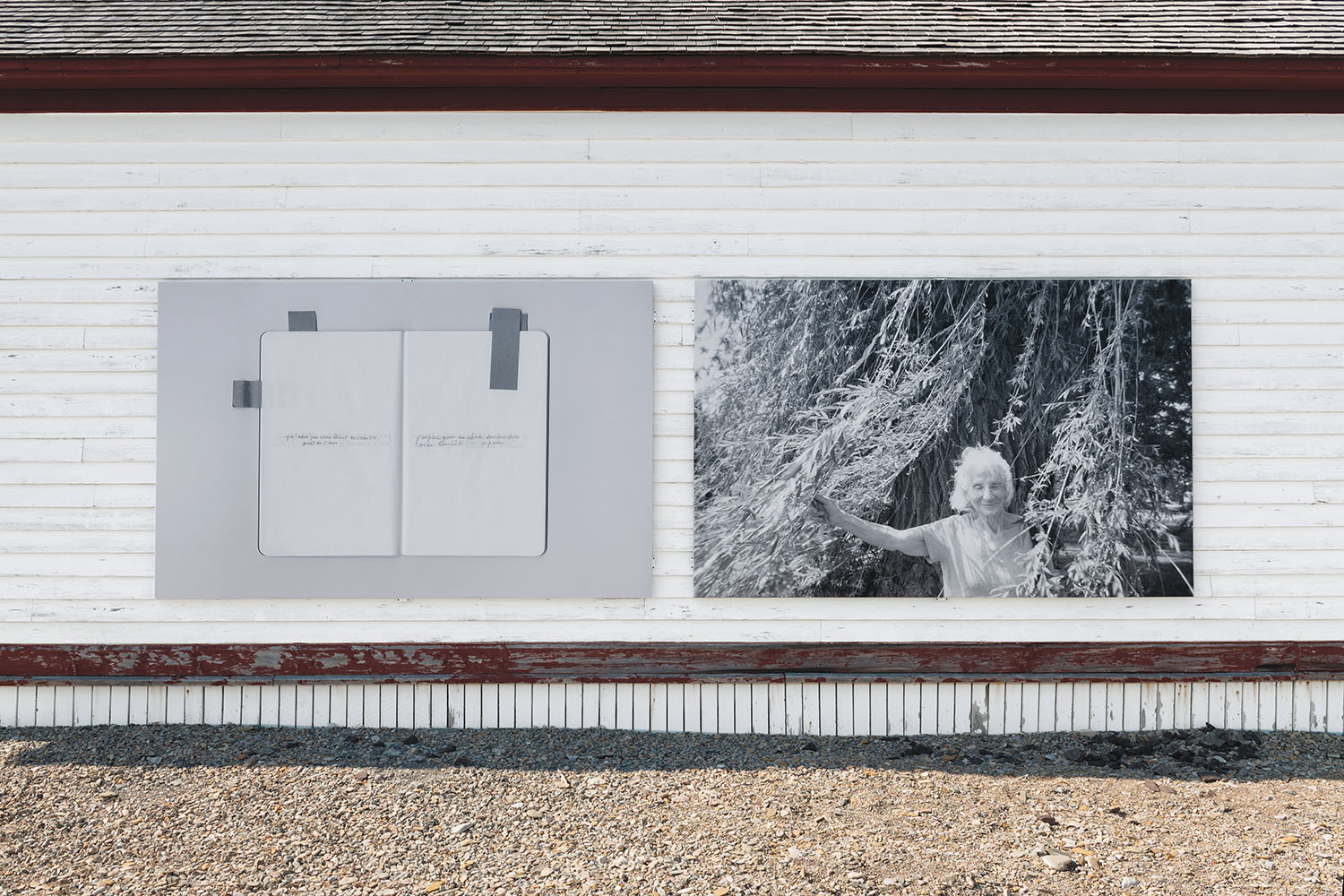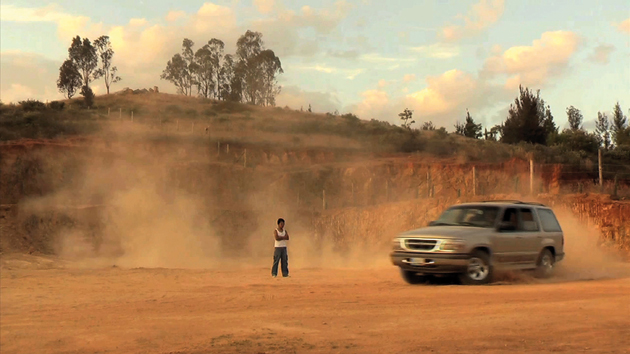
[En anglais]
The thread of self-reflexivity weaves through the three video works in Edgardo Aragón’s first Canadian solo exhibition, Ley Fuga, at Deluge Contemporary Art. The Oaxaca, Mexico-born artist not only draws on familial history, but represents its residual presence by casting his own younger brothers, cousins, and nephews in Efectos de Familia (2007–09), while additionally employing narrative and landscape in Matamoros (2009) and La Trampa (2011) to highlight generational corruption faced throughout Mexico, and within his own family. Aragón’s personal reflection considers an inherited legacy, whereby personal agency is underscored by social and familial pressure, and the perspective is one of both internal and external view.
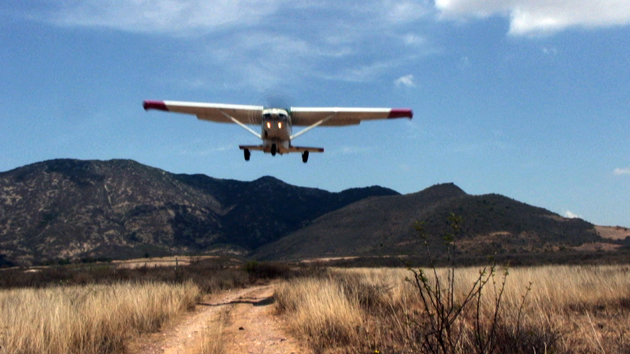
La Trampa, video still, 2011.
Photo: © Edgardo Aragón, courtesy of Deluge Contemporary Art, Victoria
With substantial North American media coverage in recent years of organized crime activity in Mexico, Aragón’s exhibition works to de-sensationalize and to provide space for contemplative action. La Trampa dominates the visual and audible space in the small upstairs gallery, and this three-channel HD projection clearly sets the stage for the two flanking videos. A rural landscape is ever present and a small plane interjects — transporting people? guns? drugs? — interfering with any focused viewing of the other two works, and reminding us of our presumptions, our insecurities, and our safety as viewers in the gallery space. To listen further provides context, and clarity is found through the song, a narcocorrido, performed by two men in the centre projection. The song, like the narration in Matamoros, recounts events and associated experiences of loading planes and vehicles with illegal drugs, running packages through checkpoints, and, specifically, the massacre of peasants caught harvesting marijuana by Mexican federales in 1979.
Matamoros becomes a manifestation of survival. Through the gradual unfolding of detail, the viewer is left to fill in the possibilities. Further, the narrator’s intermittent inclusion of personal and geographical anecdotes highlights the capacity of the human psyche to normalize or make sense of these events; to survive, and, as Aragón describes in a 2013 interview, to celebrate oneself by contrast to one’s murdered comrade.
The emulation of torturous cartel activities in Efectos de Familia is decisively visceral in the employment of Aragón’s adolescent male relations. This strategy of disassociation, using children with toy guns to re-enact punishment and murder, questions the generational performativity that allows the continuation of such violent and corrupt behaviour. Aragón speaks of his method as one intended to educate subsequent generations and to provide an example of alternate lifestyles and vocations. While the soundtrack in Efectos de Familia that further echoes the young age of the actors was absent in this particular installation, these works remain effec-tive in unison. With time, the connectivity of the stories Aragón tells through his videos becomes more apparent, yet what are the consequences of the public disclosure of his family’s relationship to these events?
